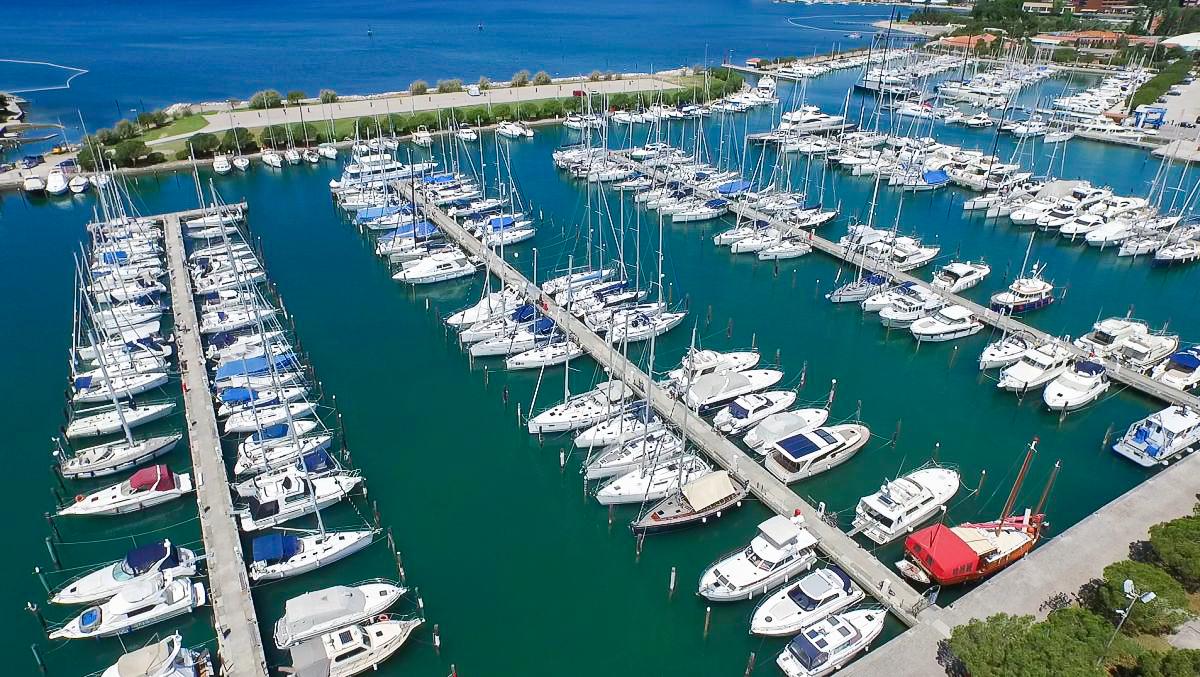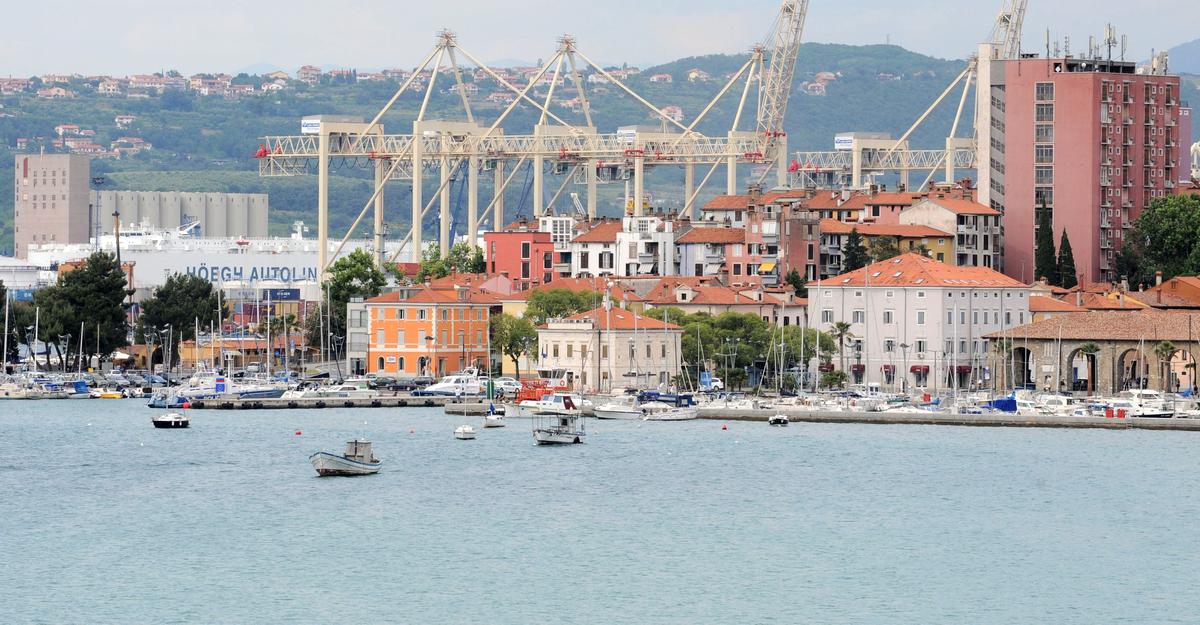

There are 23 maritime EU-28 Member States
In the EU-28, 23 Member States have access to the sea. Only five Member States – the Czech Republic, Luxembourg, Hungary, Austria and Slovakia – are landlocked.
Since 2010 the leading European countries in terms of port traffic of goods have been the Netherlands, the United Kingdom, Italy and Spain. Together they handle over half of all port goods in the EU-28. They are followed by France, Germany and Belgium. These seven countries handle three quarters of all port goods in the EU-28. With only one merchant port, by 2013 Slovenia was in front of Cyprus and Malta, and in 2014 and 2015 caught up with Croatia and was last but four in the EU-28.
The largest port in the EU with almost a tenth of total goods handled in the EU-28 is Rotterdam (the Netherlands), followed by Antwerpen (Belgium), Hamburg (Germany), Amsterdam (the Netherlands) and Algeciras (Spain). In 2015, among the top 20 ports in the EU nine were Mediterranean ports, eight were North Sea ports, two were Atlantic ports and one was a Baltic port.
Port traffic of passengers in the EU exceeded 395 million in 2015. A third of all passengers embarking and disembarking in European ports were recorded in Italian (70 million) and Greek (66 million) ports, followed by Danish ports (around 42 million passengers).
According to the Eurostat methodology, main ports are those handling over 1 million tons of goods and those with over 200,000 passengers annually. The Port of Koper meets the criterion for goods handling but not for the number of passengers.
Our only commercial port celebrate 60 anniversary
The company Luka Koper d.d. (at first named Port of Koper), a modern North Adriatic port equipped with infrastructure for handling various groups of goods, celebrates its 60 anniversary this year. The port infrastructure is being constantly upgraded: with the planned construction of the third pier the capacity of the container terminal is being increased. The port has the largest car terminal on the Adriatic coast. Improved railway infrastructure – construction of a new railway track – would enable a better connection with the hinterland. Every year more of cruise ships come to the port of Koper, so construction of a reception facility at the passenger terminal is being planned.
Every year Luka Koper organises a special day when it opens its doors to the visitors. It’s called Pristaniški dan (Day of the Port). This year it will be held on 20 May.
Slovenia – a maritime country – and its institutions performing tasks related to the sea
Slovenes were studying to become seamen already in the Habsburg Monarchy when – to enable the establishment of the Austrian fleet in the Adriatic Sea – on 20 August 1753 the Empress Maria Theresa signed a decree on establishing the School for Mathematics and Nautical Sciences in Trieste. In the second half of the 19th century maritime schools were established on the territory of Yugoslavia. Most Slovenes decided to study merchant marine in cities on the Adriatic coast, such as Bakar, Mali Lošinj, Split, Dubrovnik and Kotor.
The first Slovenian maritime school was established in 1947, so this year it celebrates 70 years of existence. In all these years about 4,600 students graduated from the Secondary Maritime School. In 1960 the Junior Maritime College was established; in 1986 it was renamed Maritime and Transport College and in 1992 upgraded to College of Maritime Studies and Transport. Since 1995 maritime studies have been conducted at the Faculty of Maritime Studies and Transport. Since its beginning 2,080 students graduated in maritime studies.
The shipping company Splošna plovba Koper was established in 1954 and provided education, scholarships and employment to Slovene mariners. Today Splošna plovba d.o.o., which has its headquarters in Portorož, has ten ships with total deadweight of 514,195 tons and provides international maritime shipping services. Most Slovene mariners earn their living on foreign vessels.
Maritime Biological Station Piran was established in 1969 as an independent unit of the University of Ljubljana’s National Institute of Biology. Today it is included in the network of European marine research institutes and stations (MARS) and cooperates in several international marine programs. It is the only Slovenian research institution studying the sea and monitoring its quality.
The central museum taking care of the Slovenian maritime heritage is the Maritime Museum Sergej Mašera Piran, established in 1954 and named after a Slovenian national hero, Lieutenant of the Yugoslav Royal Navy, who in 1941 together with his colleague Lieutenant Milan Spasić blew himself up on a destroyer in the Bay of Kotor rather than let the ship be captured by the enemy. In Slovenia 11 streets are named after Sergej Mašera, most of them in the Slovene Littoral. Sergej Mašera’s sister was the godmother of the first Slovenian warship, the patrol boat Ankaran.
The Slovenian Maritime Administration in Koper, which in 1995 succeeded the Harbour Master’s Office, is an institution taking care of supervising the sea and coast in terms of safety, navigation and ecology.
Maritime police protects national borders at sea, supervises the safety of navigation and the saving of people and property at sea.
The 430th Naval Division stationed in Ankaran provides military defence of the Slovenian water area and performs the tasks of protection, rescue and assistance at sea.
Did you know?
In 2017, 61 cruise ships will enter the Port of Koper. If you are interested in arrivals of passenger ships into the port of Koper, timetable is available here.
You can check the names and other information of ships currently in the Bay of Koper here.
The ocean buoy Vida, which is located in the Bay of Piran, is equipped with measuring instruments providing insight into the situation in the Slovenian sea (currents, winds, waves, sea and air temperature, saltiness) and thus contributes to better safety at sea, evaluating ecological burdens of the Slovenian sea and is also very helpful to fishermen, divers and sailors in the Slovenian and the Italian side of the bay.
Jamborna cesta (the Mast Road), which witnesses that in the past Slovenes from all over the country were living off the sea, is the road from Planina, by Studeno and ending in Razdrto. It was constructed by the Romans and was named after the logs used for ships’ masts in the ports of the Northern Adriatic Sea. Today the road is a tourist attraction and places along the road are excellent starting points for biking and trekking tours.
In 2016 a museum was opened that witnesses the history of Slovenian seamanship and fishery in the area around Trieste is the Fishery Museum of the Trieste Area in Križ near Trieste.
Saltpans used to play an important role in social, economic and cultural life of people in places in Slovenian Istria; this is shown in the Salt Works Museums in Sečovlje, which preserves the rich natural and cultural heritage.
In addition to its main tasks, the task of the Slovenian warship Triglav 11 is the protection and rescue of people at sea and cooperation in preventing pollution at sea. In March 2016 members of the Slovenian navy finished the international EU mission the main purpose of which was to limit the operation of smugglers of people in the Mediterranean; crew members rescued or cooperated in rescuing around 1,100 refugees.
If you are interested in marine motifs, check out the exhibition of the painter Albert Sirk, born 130 years ago in Križ near Trieste, who is recognised by the experts as the only real Slovenian marine artist. The exhibition will be open until 21 May 2017 in the National Gallery in Ljubljana.
Twenty years ago, in 1997, the first show Med valovi (Between the Waves) was broadcast by TV Koper, replacing the show Milje in vozli (Miles and Knots). Every month the show presents topics related to the sea and maritime activities. For over 40 years Radio Koper has been broadcasting a weekly show on the sea and seamen.
Andreja Klavžar, Statistical Office of the Republic of Slovenia


































































